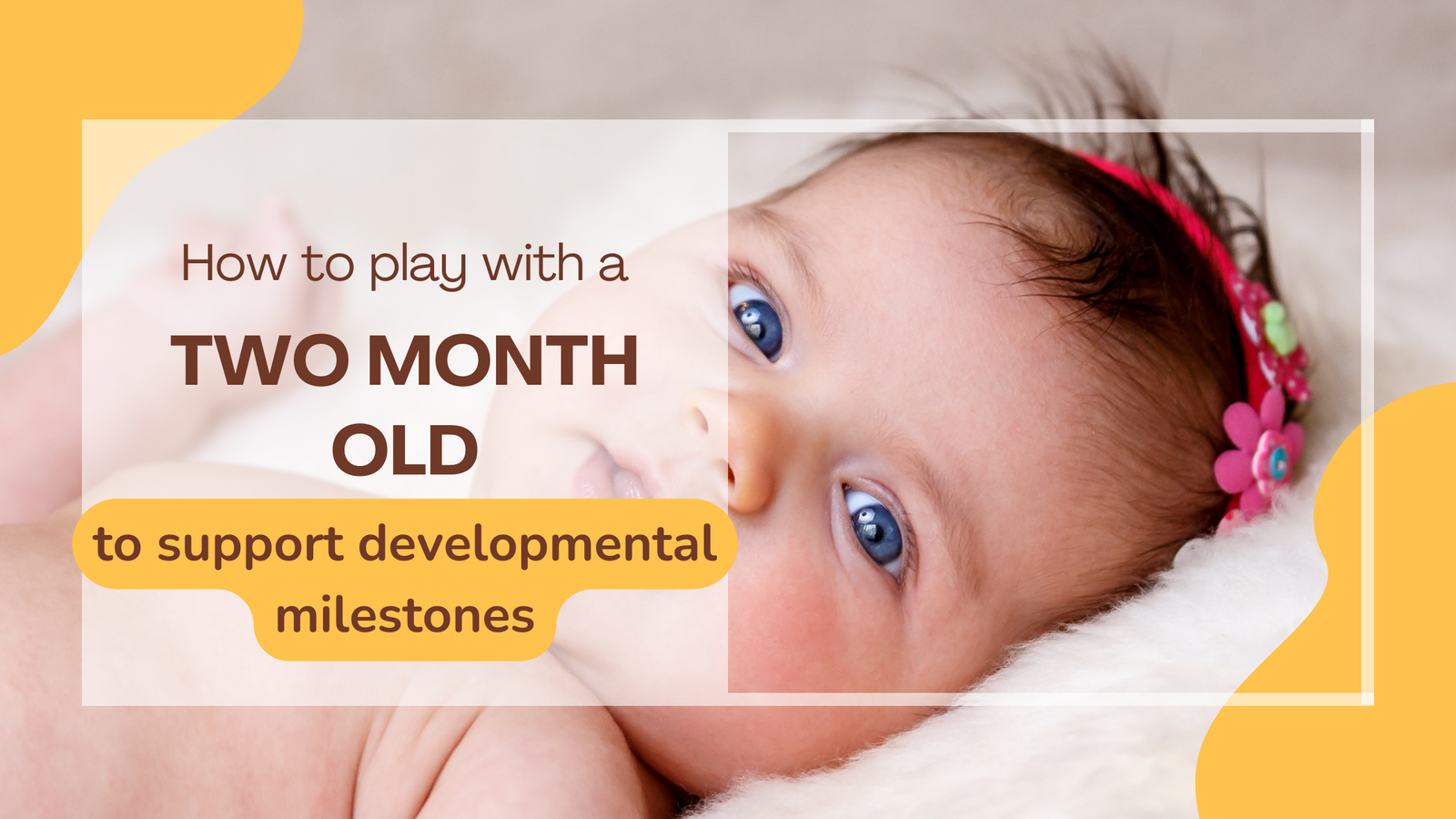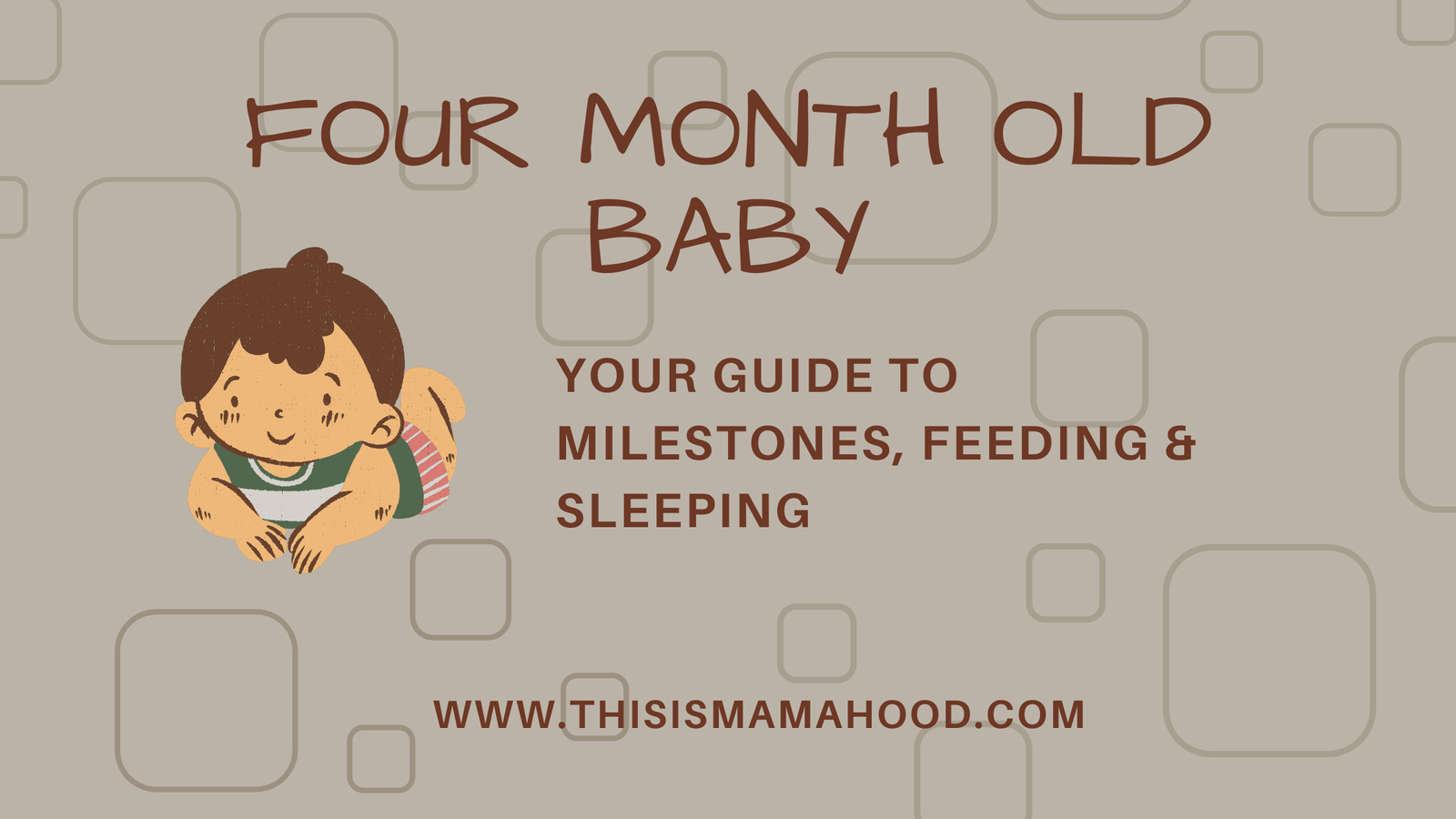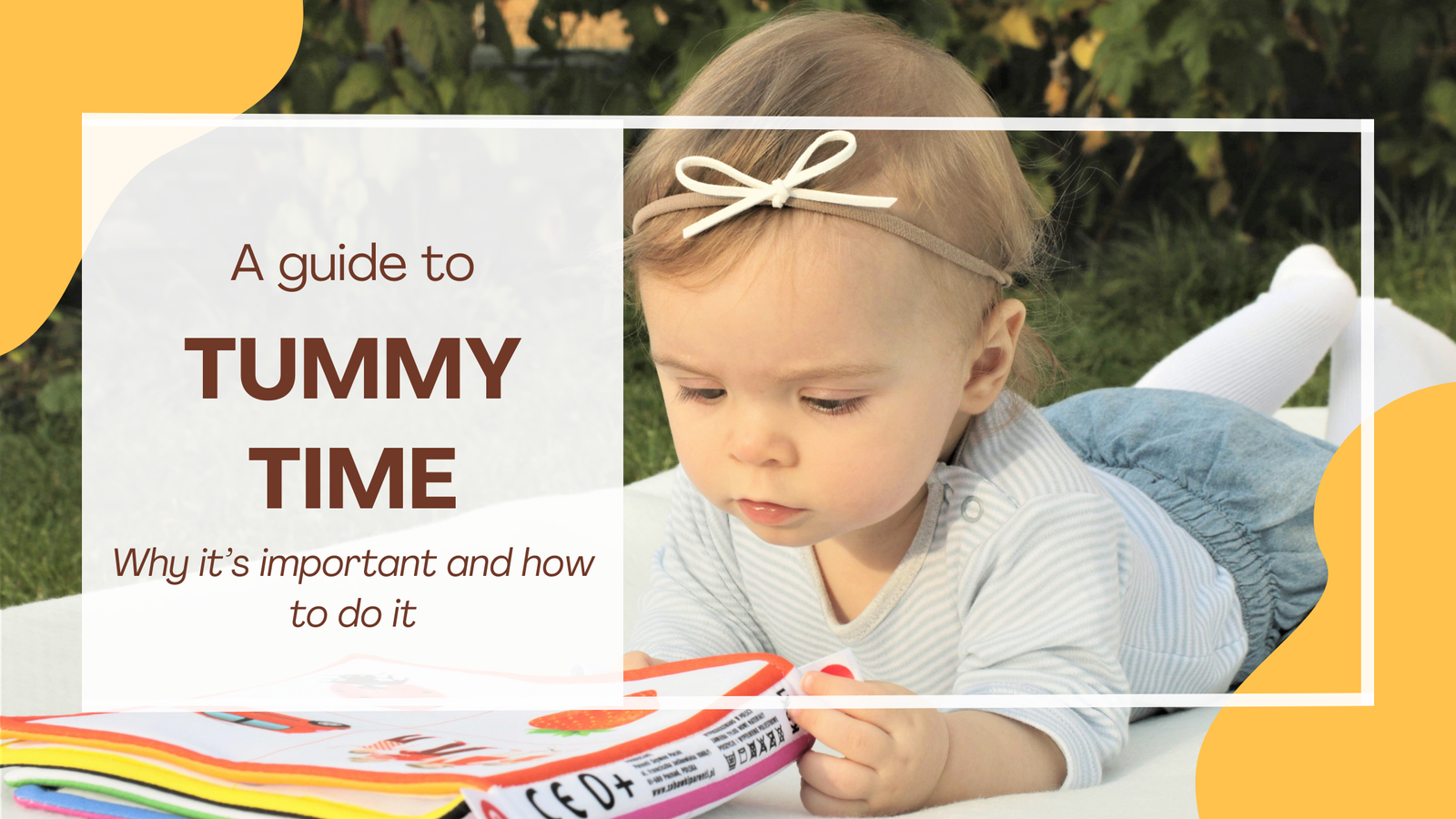Your two-month-old is getting bigger and staying awake for up to one-hour periods. They are starting to smile more and move their arms and legs towards their bodies and they are beginning to hold their head up more. However, you may be wondering what to do with them and how to play with a 2-month-old to support them developmentally.
This guide will outline how to best play with your two-month-old to support their developmental milestones. Remember, though, that babies all develop at their own rates. Some babies may meet these milestones earlier, and others may meet them later on. If you are concerned about your child not meeting development milestones, consult your doctor.
Gross Motor Skills
What are gross motor skills?
Gross motor skills involve the large muscles of the body. They are skills that require using the arms, legs, and torso. Some examples of gross motor skills children acquire are running, jumping, and throwing.
What milestones should my two-month-old have for gross motor skills?
At two months old, your baby should be able to hold their head up for a few seconds while laying on their tummy. While on their back, you should notice that they are starting to wiggle around more. They will move both their arms and their legs inwards towards their body and then back outwards.
How do you play with a 2-month-old to develop gross motor skills?
1. Freedom to move
The most important way to develop your baby’s gross motor skills is to give them the freedom to move around. It may be tempting to want to hold your baby 24/7, however the only way for them to develop the skills they need, they need experience and practice.
2. Tummy time
Tummy time will continue to be an important activity for your baby to engage in, as it will best develop their neck, head, and core muscles. Remember that tummy time can be done in a variety of ways; not just on the floor. Laying your baby on your chest while you are leaning back, or on your legs while doing leg lifts, also are effective tummy time activities.
3. Activity/play mats
Activity mats with dangling toys are also great for the development of your baby’s gross motor skills. While laying on their back, your baby should wiggle around and move their arms and legs. When this occurs, they are prone to accidentally hit one of the toys hanging above them. Knowing that this was a reaction to something they did, babies will often want to try to recreate the scenario and will be encouraged to continue moving their arms and legs.
Fine Motor Skills
What are fine motor skills?
Fine motor skills involve the smaller muscles of our bodies, mainly in our wrists and hands. Skills that require fine motor skills include picking up and holding items, writing, and tying shoelaces.
What milestones should my two-month-old have for fine motor skills?
When it comes to your two-month-old baby’s fine motor skills, they should be able to form fists and open their hand back up. They will be able to hold a small toy for a brief period of time. They should also be able to hit near objects with their hands.
How do you play with a 2-month-old to develop fine motor skills?
1. Use easy-to-hold toys
In order to develop your baby’s fine motor skills through play at two months old, you should offer items that are easy to hold and grasp. Think of things like o-balls and plastic rings. Make sure that whatever you give your baby is big enough that it will not pose a hazard if placed in your baby’s mouth.
2. Activity/play mats
Activity mats are also great for fine motor skills in the same way that they are great for gross motor skills. Babies will reach their hands up and be able to touch the dangling toys above them. Feeling the toys and seeing them move when touched will give your baby that instant gratification, that they will want to try to recreate it.
Speech and Language
What are speech and language skills?
Speech and language skills are the skills required to express and produce sounds, as well as understand the words of others. There are two main categories of speech and language: expressive language and receptive language. Expressive language is how you express yourself through words, while receptive language is how you understand the words and sounds of others.
What milestones should my two-month-old have for speech and language skills?
While your two-month-old may be miles away from speaking, they are currently developing the speech and language skills needed to communicate. They will be making more cooing and gurgling sounds; sounds such as ‘oooh’ and ‘ahhh’. When you talk to your baby, they should also be making sounds back at you.
How to play with a 2-month-old to develop their speech and language skills?
1. Face-to-face communication
In order to develop your baby’s speech and language skills, you should have as much face-to-face communication with them as possible. Bring your baby close to your face, around 12 inches or so away, and talk to them. You should also have direct communication with your baby; make sure they can clearly see your face when talking. This will help them to see your expressions and how your mouth moves when speaking. Through your conversations, try to model the back-and-forth model of communication: you talk, I talk, you talk. This will help them learn the mechanisms of language and communication.

Sensory Skills
What are sensory skills?
Sensory skills are those skills involving the five senses: hearing, vision, touch, taste, and smell. The way we perceive and react to the things we sense are sensory skills.
What milestones should my two-month-old have for sensory skills?
The main sensory skills that your two-month-old is developing are vision and hearing.
Their vision is improving and they should be able to track a closeby object with their eyes, then their head. This means that they will move their eyes until they can no longer see the item, then they will move their head in the same direction to look for it.
When it comes to hearing, they are starting to process sounds more. When they hear a noise close by, they will begin to turn their head toward the direction of the noise.
How to play with a 2-month-old to develop their sensory skills?
1. Track items
To help develop your baby’s vision through play, you should show your baby an item about 12 inches from their eyes. Make sure the item is directly in their view and when your baby is staring at it, slowly move it to the side. Wait for your baby’s eyes to follow the object, then move it some more. If your baby does not move their eyes, put the item back into their sight and try again.
2. Shake rattles
You can do a similar thing to develop your baby’s hearing. Shake a rattle or ring a bell quietly beside one of your baby’s ears and wait for them to move their head to find the noise. If they do not turn towards the sound, you can move their head yourself and show them the noise, to help them make the connection.
Social and Emotional Skills
What are social and emotional skills?
Social and emotional skills are how one expresses and manages the emotions of both themselves and others. These skills are essential for building connections with others and having healthy relationships in the future.
What milestones should my two-month-old have for social and emotional skills?
A milestone for social and emotional skills for your two-month-old is that they begin to smile at people. Your baby will also start to get excited to see you. They will kick their legs and move their arms in response to seeing a familiar face. They may also make sounds to show their excitement as well.
How to play with a 2-month-old to develop their social and emotional skills?
1. Make eye contact
When playing with your two-month-old, the best way to develop their social and emotional skills is by smiling at your baby and being excited to see them. Hold your baby close and make eye contact with them. While making eye contact, give them big, exaggerated smiles to encourage them to smile back.



